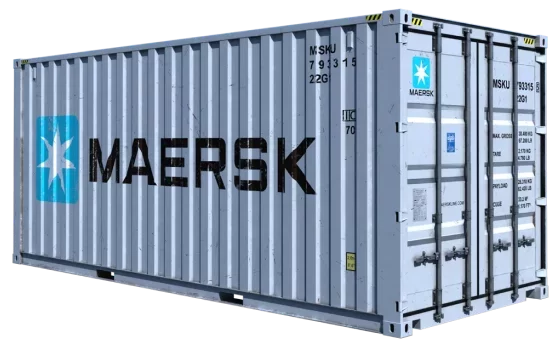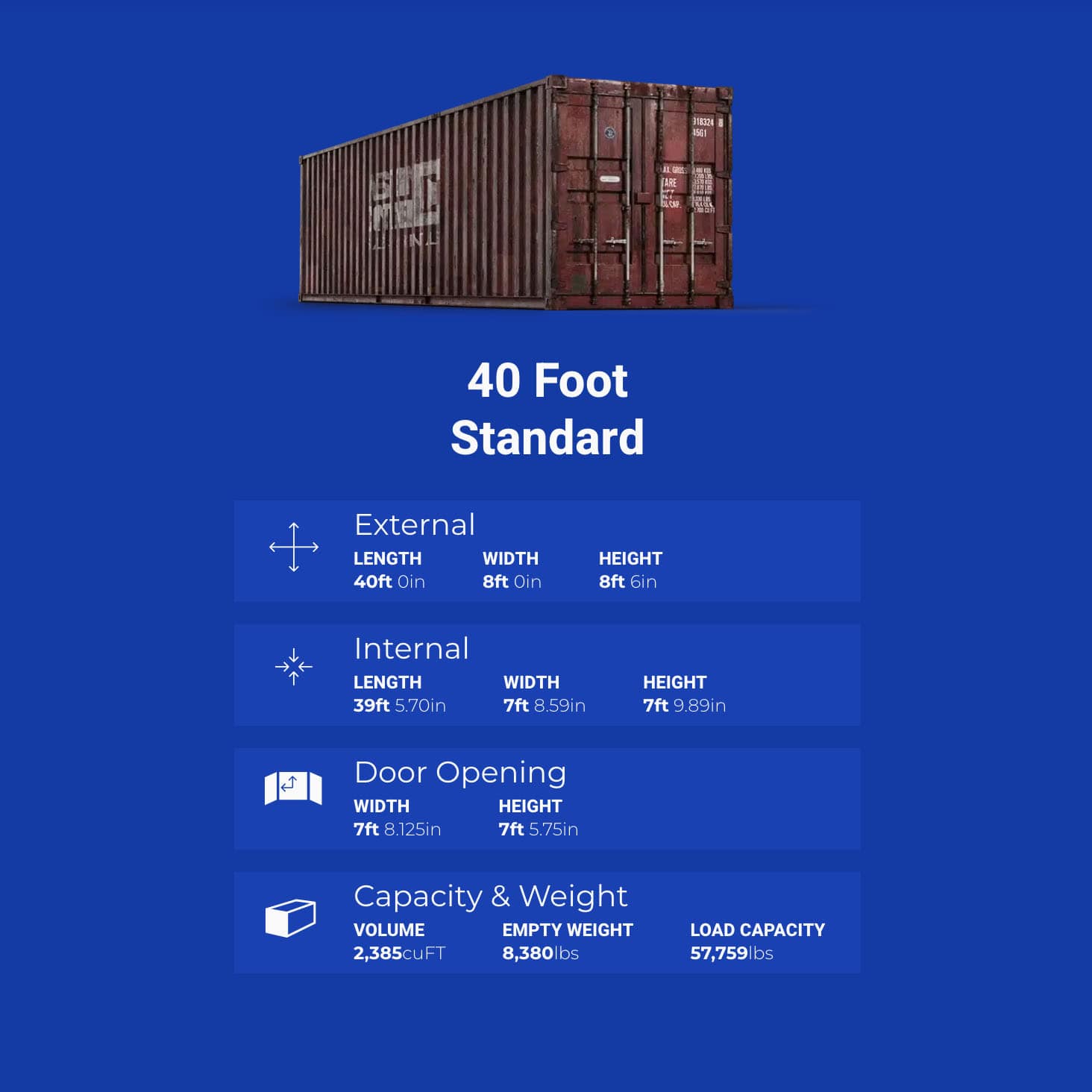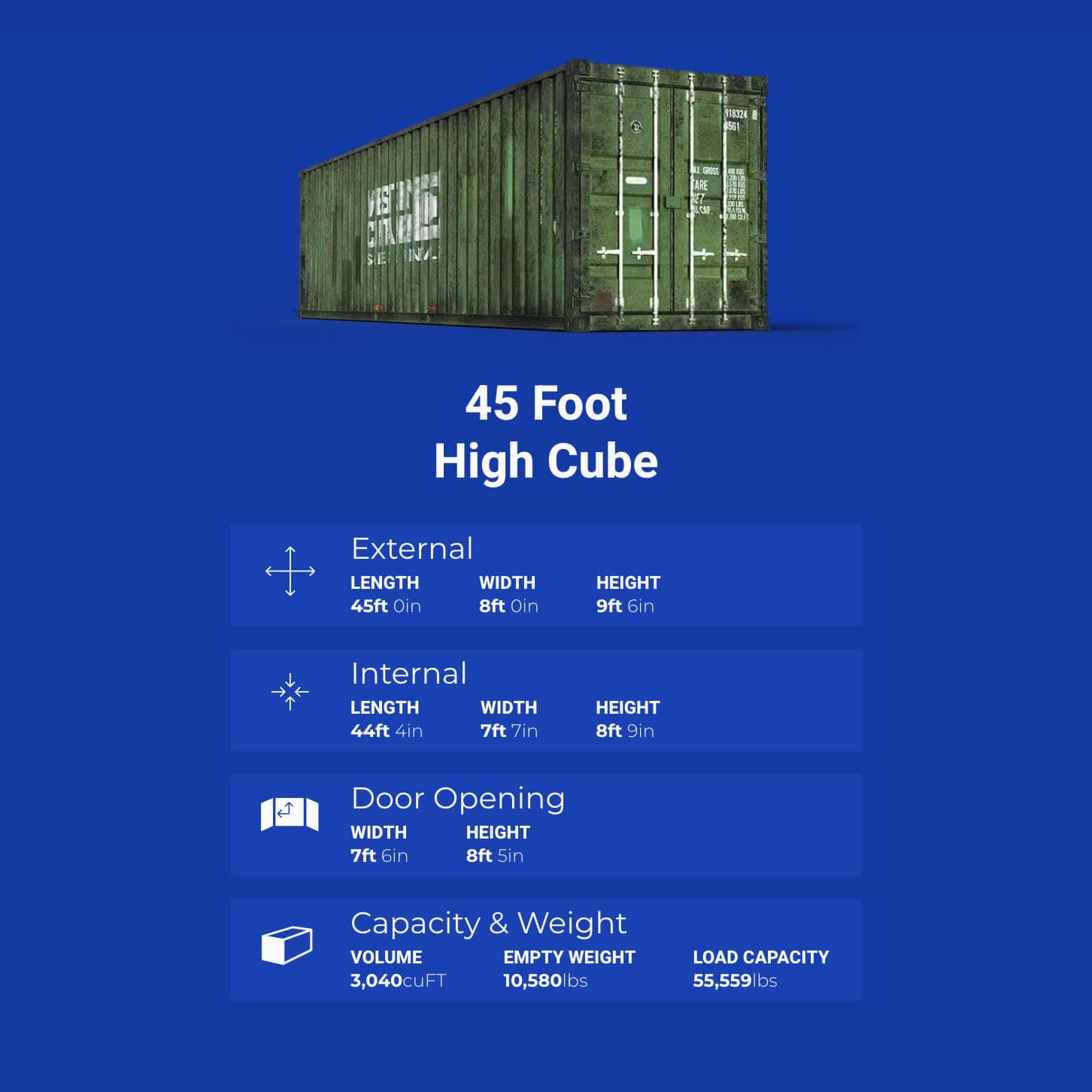New Shipping Containers
Shipping containers must fit perfectly together, so dimensions are held to very specific standards.
The International Organization for Standardization (ISO) specifies that all containers be built within a few millimeters of one another to be stackable on container ships. Containers are measured in twenty-foot equivalent units (TEUs) and are often built in 20′ and 40′ lengths.
About
About Shipping Containers
Shipping containers are held to a very specific set of specifications and dimensions to ensure the same equipment can safely handle the containers anywhere in the world. The information listed on intermodal shipping container doors is standardized so the container can be handled at any port in the world, from the ID number and dimensions to the manufacturer information on the CSC plate.

HANDLING INSTRUCTIONS
A sticker or plate that identifies items such as High Cube containers, hazardous goods, or other labels. High Cube shipping containers will additionally feature yellow decals at the top of the frame on either end to emphasize the increased height. The exterior height of High Cube containers is 9’6″ (one foot taller than standard shipping containers, which are 8’6″ tall).
CSC PLATE
The CSC Plate carries information such as the date and location of manufacturing, as well as other parameters. On the International Maritime Organization’s website, you may learn more about the Convention on Safe Containers. Also, if you intend to export your shipping container, be sure to obtain a CSC survey.
CONTAINER IDENTIFICATION NUMBER
Each shipping container is identified by a unique number. The owner (as registered with the Bureau International des Containers “BIC”) is represented by the first three letters, which are followed by a “U” for dry containers and six further numerical digits for the unit number. The seventh digit is a “check digit” that is used to calculate the value of each letter and number in the ID. Use BIC to confirm your check digit.
SIZE AND CAPACITY SPECIFICATIONS
Containers should not be loaded heavier than the weight specifications specified on the door and CSC plate to guarantee safe handling and stacking aboard ships. Please keep in mind that local shipping weight regulations may be substantially lower than the container’s maximum payload. Many shipping containers, for example, can accommodate more than 65,000 pounds of freight, however, such a load violates FMCSA requirements.
LOCKING RODS & HANDLES
Locking rods are bolted to the exterior of the shipping container cargo doors and frame, and when twisted closed and clasped, they tightly seal the door. A broken or bent locking rod might cause a door to fail to seal properly. We guarantee that the doors on every shipping container we sell will seal, but it’s always a good idea to oil the hinges and check that the door frame is square.
RUBBER DOOR GASKET
A rubber gasket surrounds all shipping container cargo doors. The gasket allows the steel doors to be closed snugly, preventing both weather and cargo from spilling out if the freight shifts or pallets fail during transport. Good gaskets are critical to a cargo container’s wind/water tightness. Our 1-year warranty covers cargo door gaskets.

20ft Used Container. From only $1,325!
Ending Soon, Don’t Miss Out!
Get Deal
Day(s)
:
Hour(s)
:
Minute(s)
:
Second(s)
Built on Site
An Eye For Detail
ISO Certified Containers
New and used containers that are ready for shipping. ISO converted containers can also be delivered worldwide by sea.




